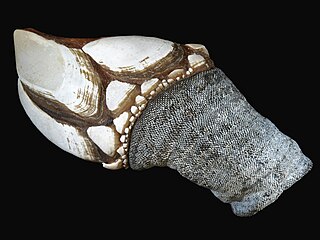
Pollicipedidae is a family of goose barnacles.

The Sacculinidae are a family of barnacles belonging to the bizarre parasitic and highly apomorphic infraclass Rhizocephala. The Sacculinidae is one of the two larger families of Rhizocephala, containing six genera:
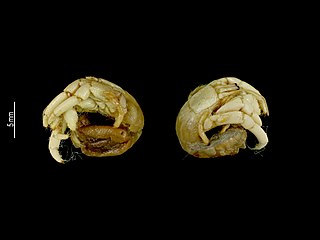
The Peltogastridae are a family of barnacles belonging to the bizarre parasitic and highly apomorphic infraclass Rhizocephala. The Peltogastridae are by far the largest family of Rhizocephala. They comprise 14 genera, 3 of which were moved from the family Lernaeodiscidae.

Lepadidae is a family of goose barnacles, erected by Charles Darwin in 1852. There are about five genera and more than 20 described species in Lepadidae.

Elminiidae is a family of symmetrical sessile barnacles in the order Balanomorpha. There are about 5 genera and 12 described species in Elminiidae.
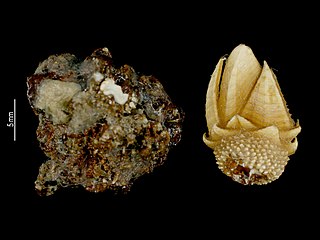
Calanticidae is a family of acorn barnacles in the order Calanticomorpha. There are about 12 genera and more than 60 described species in Calanticidae.
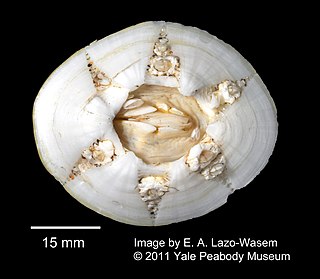
Chelonibiidae is a family of turtle barnacles in the order Balanomorpha. There are at least three genera and about eight described species in Chelonibiidae.

Poecilasmatidae is a family of goose barnacles.

Clistosaccidae is a family of parasitic barnacles belonging to the bizarre and highly apomorphic infraclass Rhizocephala, which is part of the barnacle subclass Cirripedia.
Cryptophialidae is a family of Acrothoracican barnacles in the order Cryptophialida, the sole family of the order. There are at least 2 genera and more than 20 described species in Cryptophialidae. These barnacles burrow into calcareous rocks and structures, such as limestone, shells, or corals.
Lithoglyptidae is a family of barnacles in the order Lithoglyptida. There are about 7 genera and more than 40 described species in Lithoglyptidae.
Malacolepadidae is a family of acorn barnacles in the order Scalpellomorpha. There are at least two genera and two described species in Malacolepadidae.
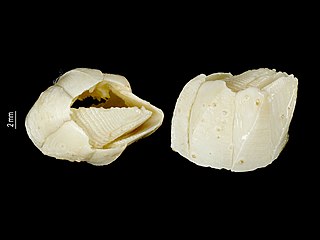
Pachylasmatidae is a family of symmetrical sessile barnacles in the order Balanomorpha. There are about 10 genera and at least 30 described species in Pachylasmatidae.
Eolepadidae is an extinct family of barnacles in the order Eolepadomorpha. There are 2 genera and about 12 described species in Eolepadidae.

Brachylepadidae is an extinct family of barnacles in the order Brachylepadomorpha, the sole family in the order. There are about 7 genera and more than 20 described species in Brachylepadidae.
Iblomorpha is a small order of barnacles in the class Thecostraca. There are only two families and about eight described species in Iblomorpha. In this group we find barnacles that use calcium phosphate in their shell, and species that protect themselves against predators with poison.
Eolepadomorpha is an extinct order of barnacles in the class Thecostraca. There are 2 families and about 14 described species in Eolepadomorpha.
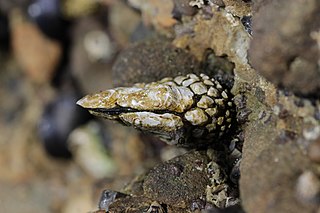
Pollicipedomorpha is an order of pedunculated barnacles in the class Thecostraca. There are 3 families and more than 30 described species in Pollicipedomorpha.

Peltogasterellidae is a small family of parasitic barnacles in the class Thecostraca. There 4 genera and about 10 described species in Peltogasterellidae.
Idioiblidae is a family of normal barnacles in the order Iblomorpha. There are at least three genera and about five described species in Idioiblidae.












